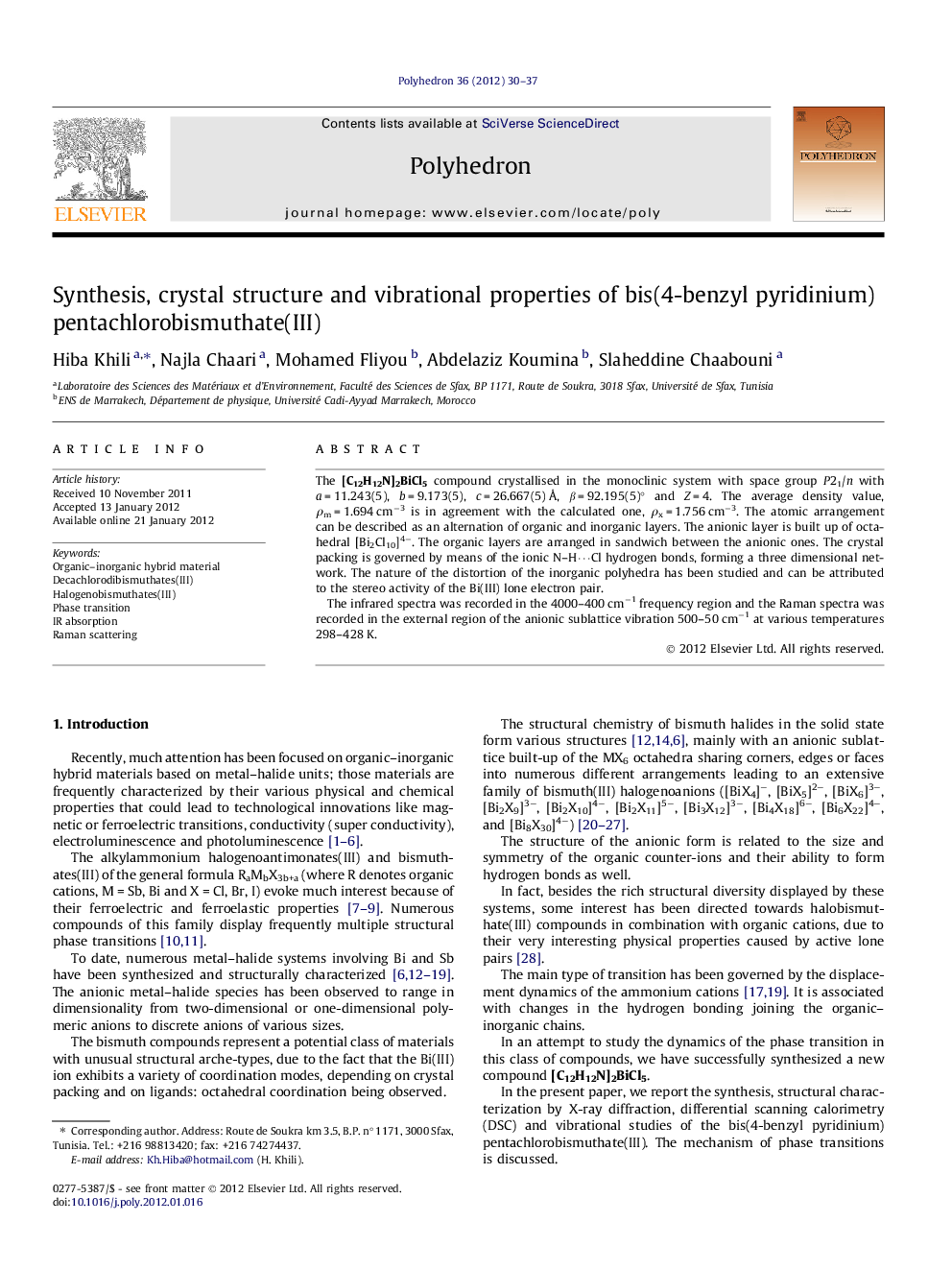| Article ID | Journal | Published Year | Pages | File Type |
|---|---|---|---|---|
| 1337598 | Polyhedron | 2012 | 8 Pages |
The [C12H12N]2BiCl5 compound crystallised in the monoclinic system with space group P21/n with a = 11.243(5), b = 9.173(5), c = 26.667(5) Å, β = 92.195(5)° and Z = 4. The average density value, ρm = 1.694 cm−3 is in agreement with the calculated one, ρx = 1.756 cm−3. The atomic arrangement can be described as an alternation of organic and inorganic layers. The anionic layer is built up of octahedral [Bi2Cl10]4−. The organic layers are arranged in sandwich between the anionic ones. The crystal packing is governed by means of the ionic N–H⋯Cl hydrogen bonds, forming a three dimensional network. The nature of the distortion of the inorganic polyhedra has been studied and can be attributed to the stereo activity of the Bi(III) lone electron pair.The infrared spectra was recorded in the 4000–400 cm−1 frequency region and the Raman spectra was recorded in the external region of the anionic sublattice vibration 500–50 cm−1 at various temperatures 298–428 K.
Graphical abstractThe structure of [C12H12N]2BiCl5 is made up of dimeric decachlorodibismuthate(III) and two independent 4-benzylpyridinium cations. The mechanism of phase transition is discussed by Raman scattering and calorimetric studies.Figure optionsDownload full-size imageDownload as PowerPoint slideHighlights► The [C12H12N]2BiCl5 is an organic/inorganic hybrid compound. ► The crystal packing is governed by ionic N–H⋯Cl hydrogen bonds. ► The vibrational properties were studied by Raman scattering and infrared spectroscopy. ► The differential scanning calorimetry indicates the presence of phase transition.
